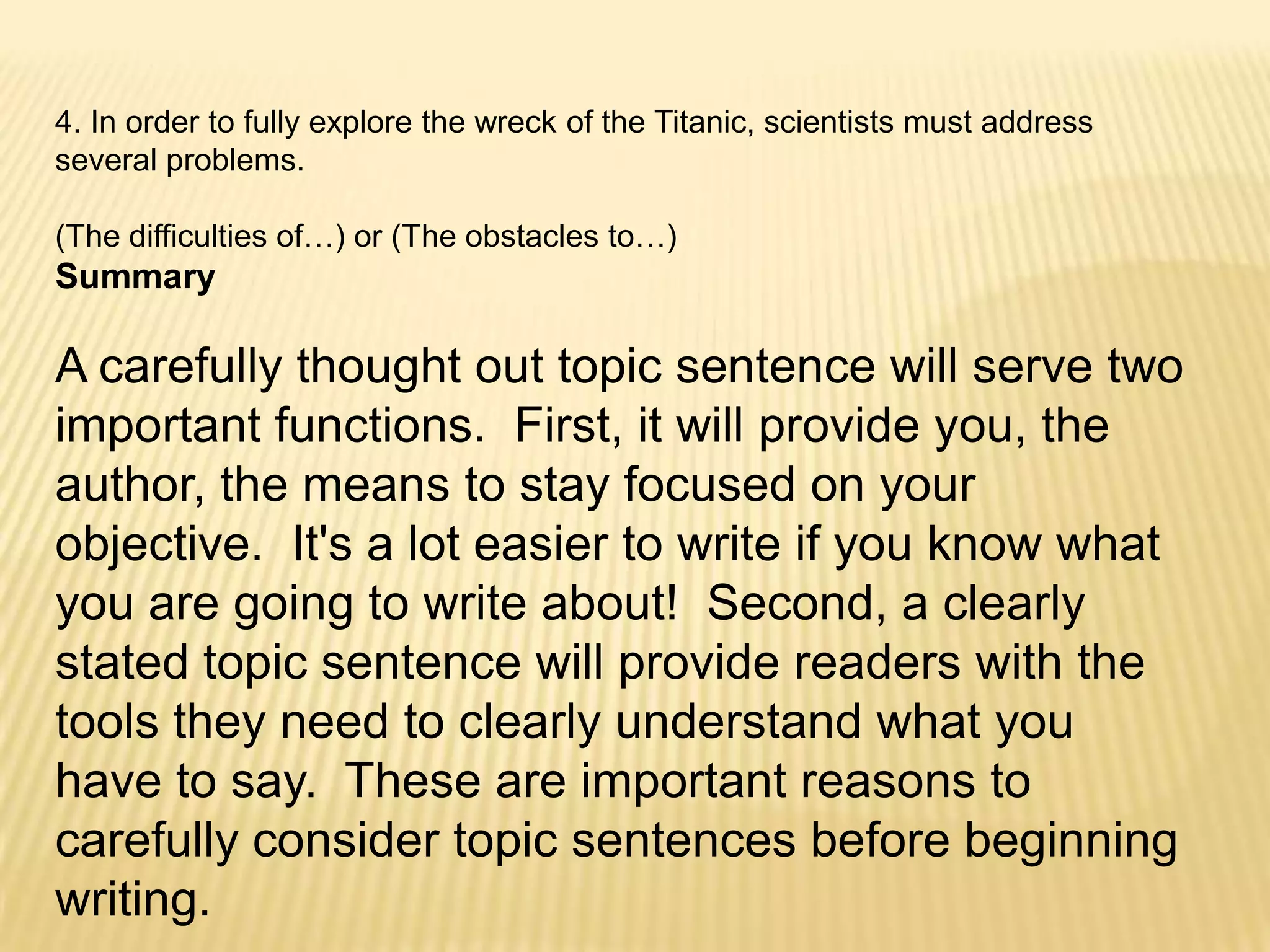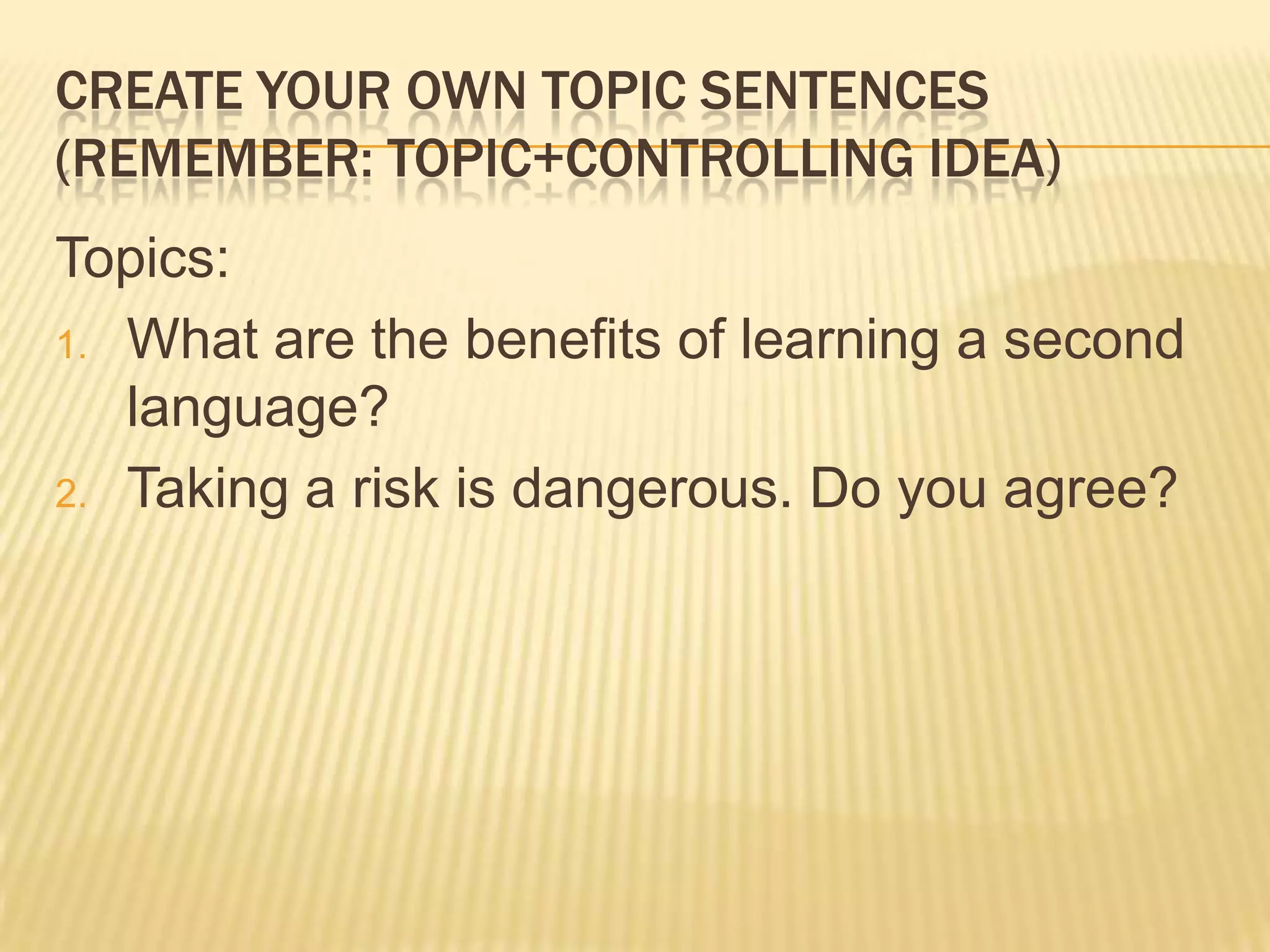The document provides guidance on writing essays, including how to structure an essay with an introduction, body, and conclusion. It emphasizes the importance of developing a clear topic sentence for each paragraph that includes both a topic and controlling idea. Examples of effective topic sentences are provided, and the reader is given exercises to develop their own topic sentences.
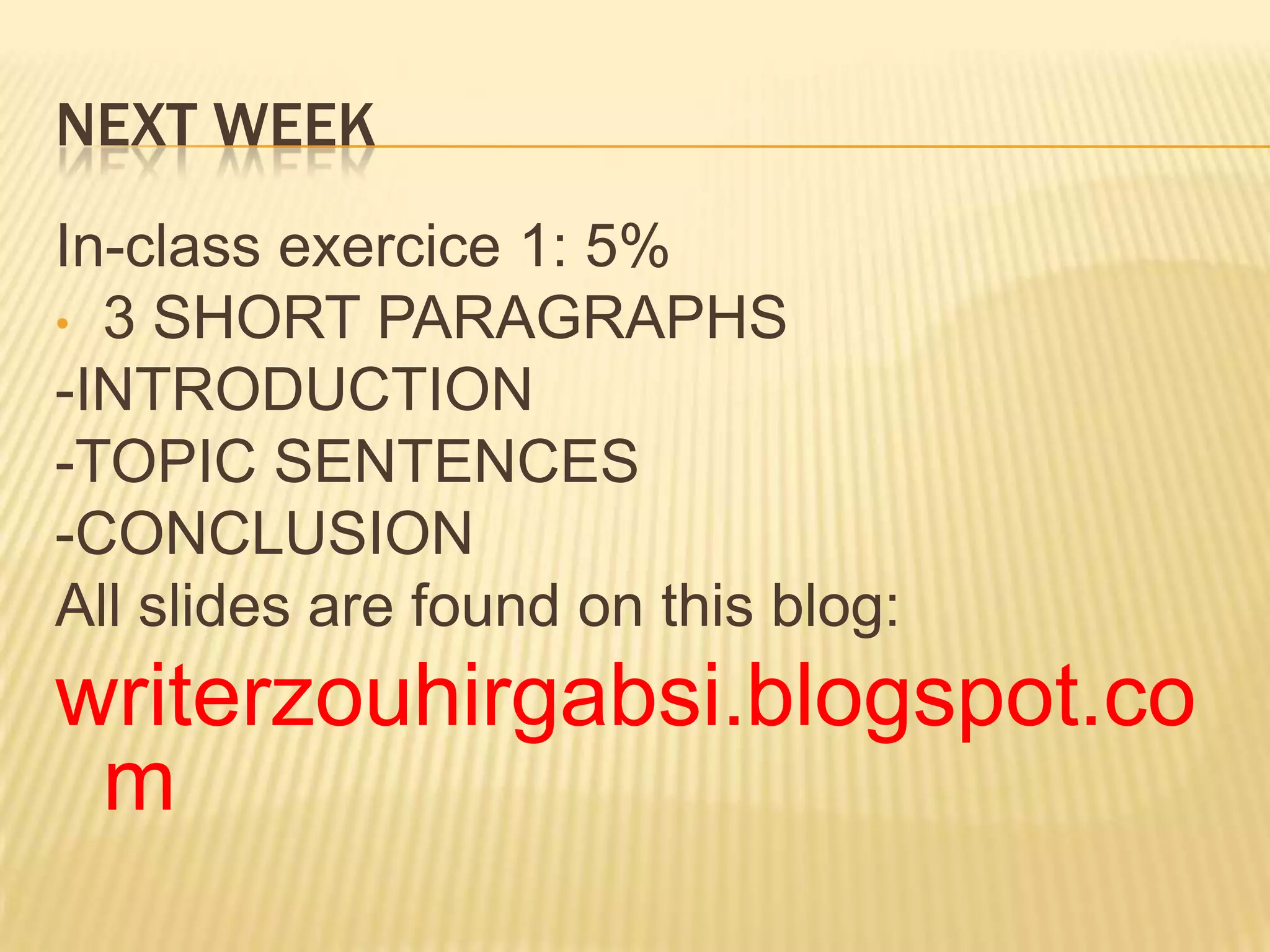
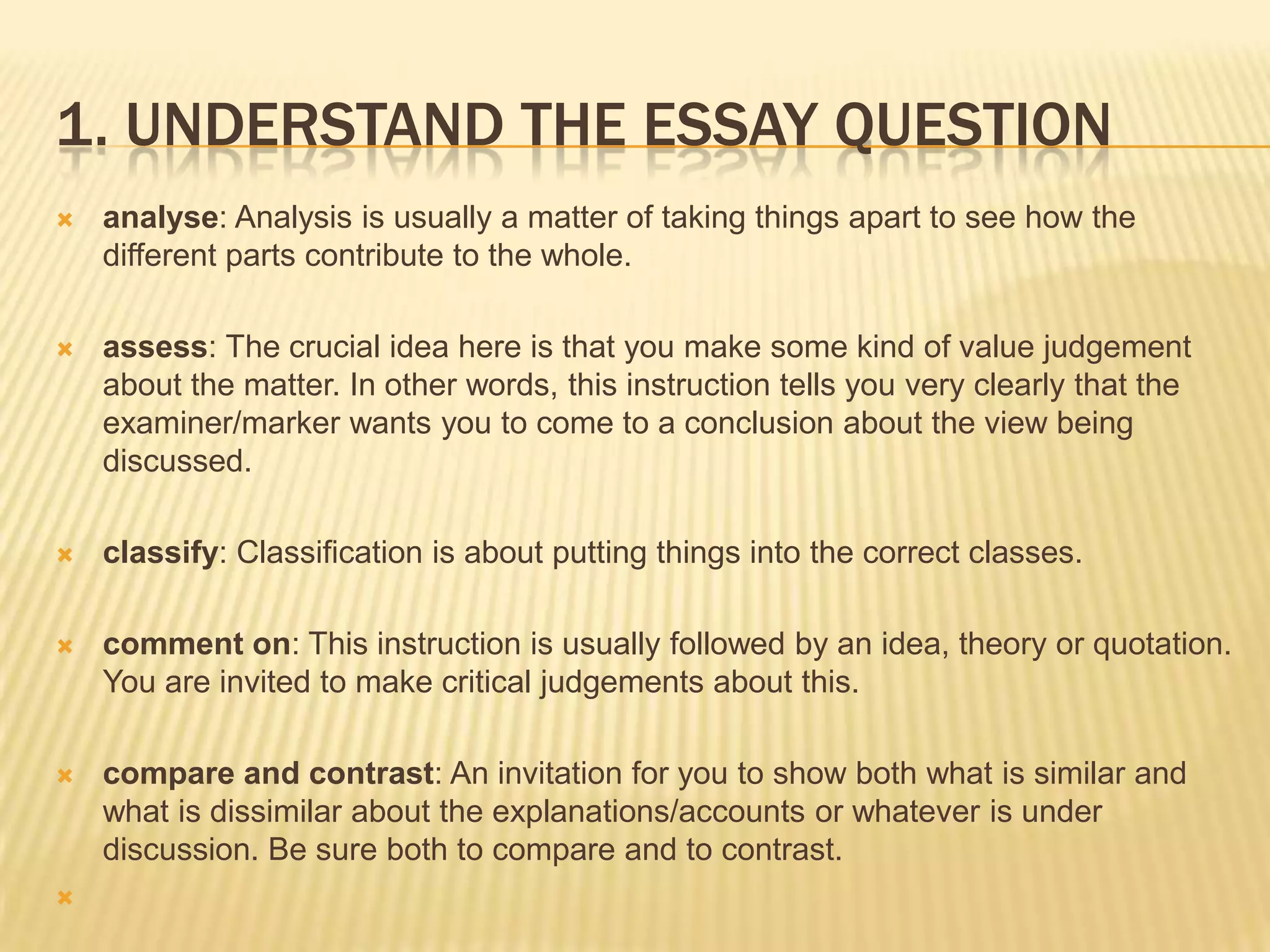
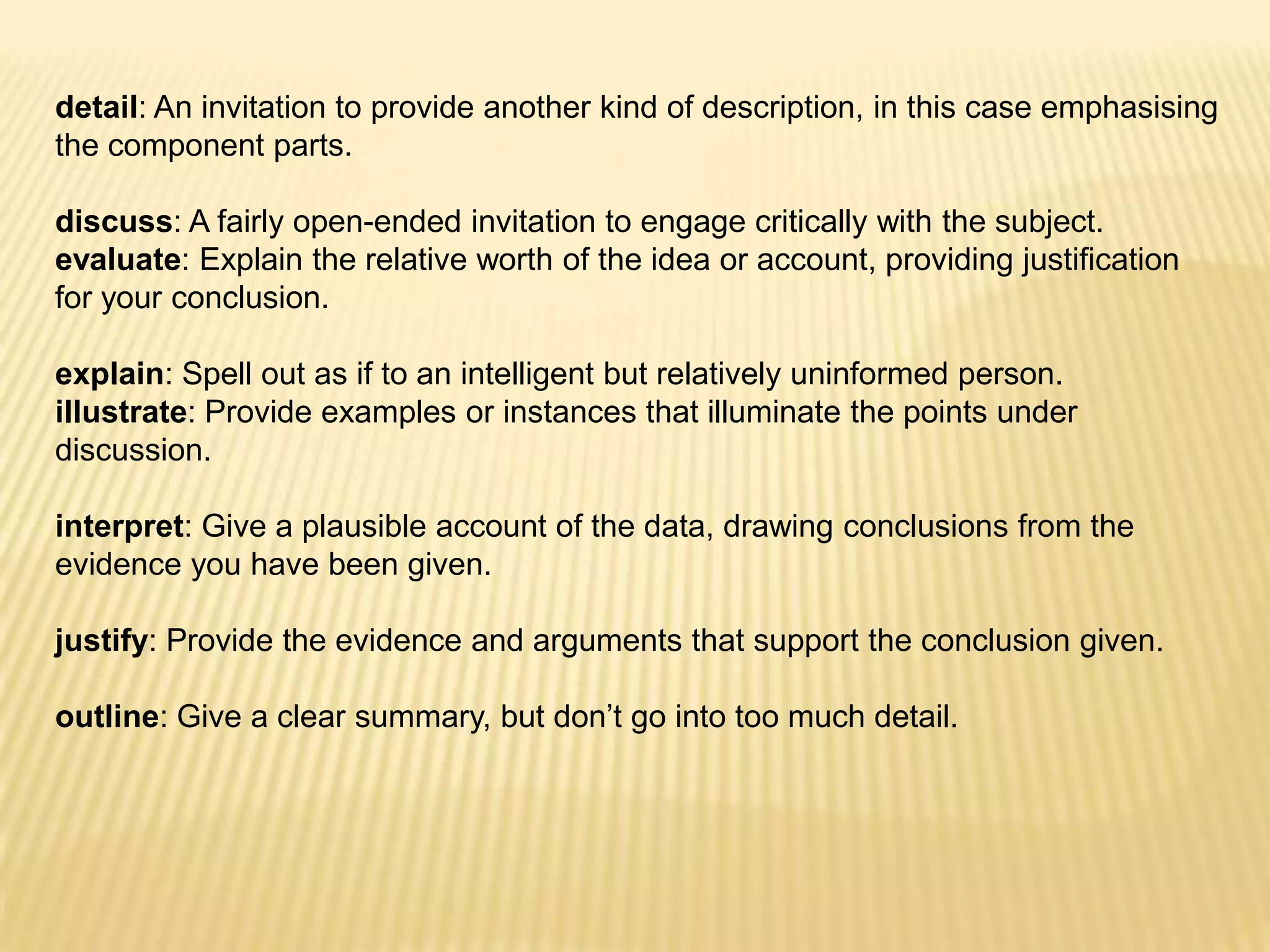

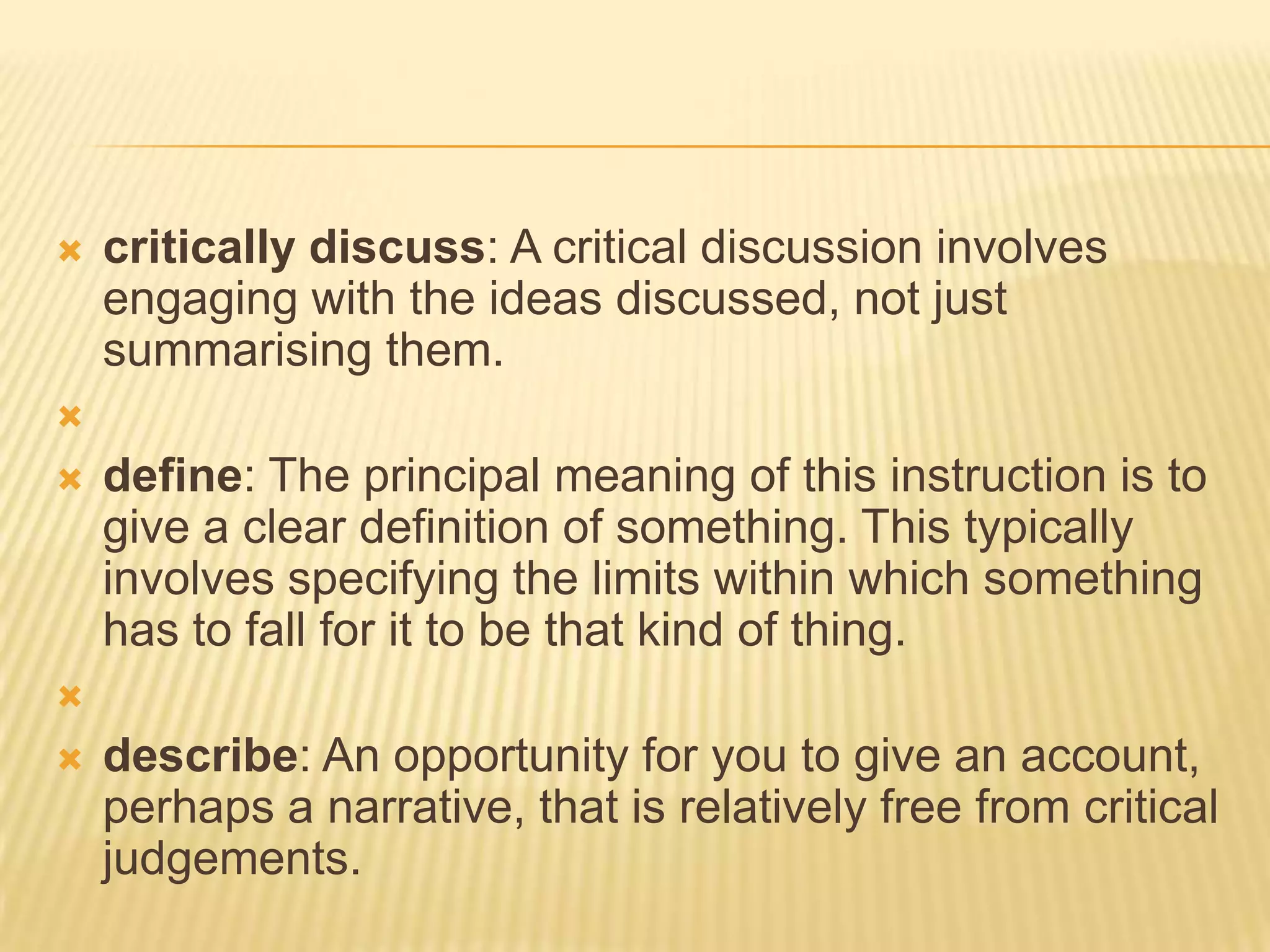
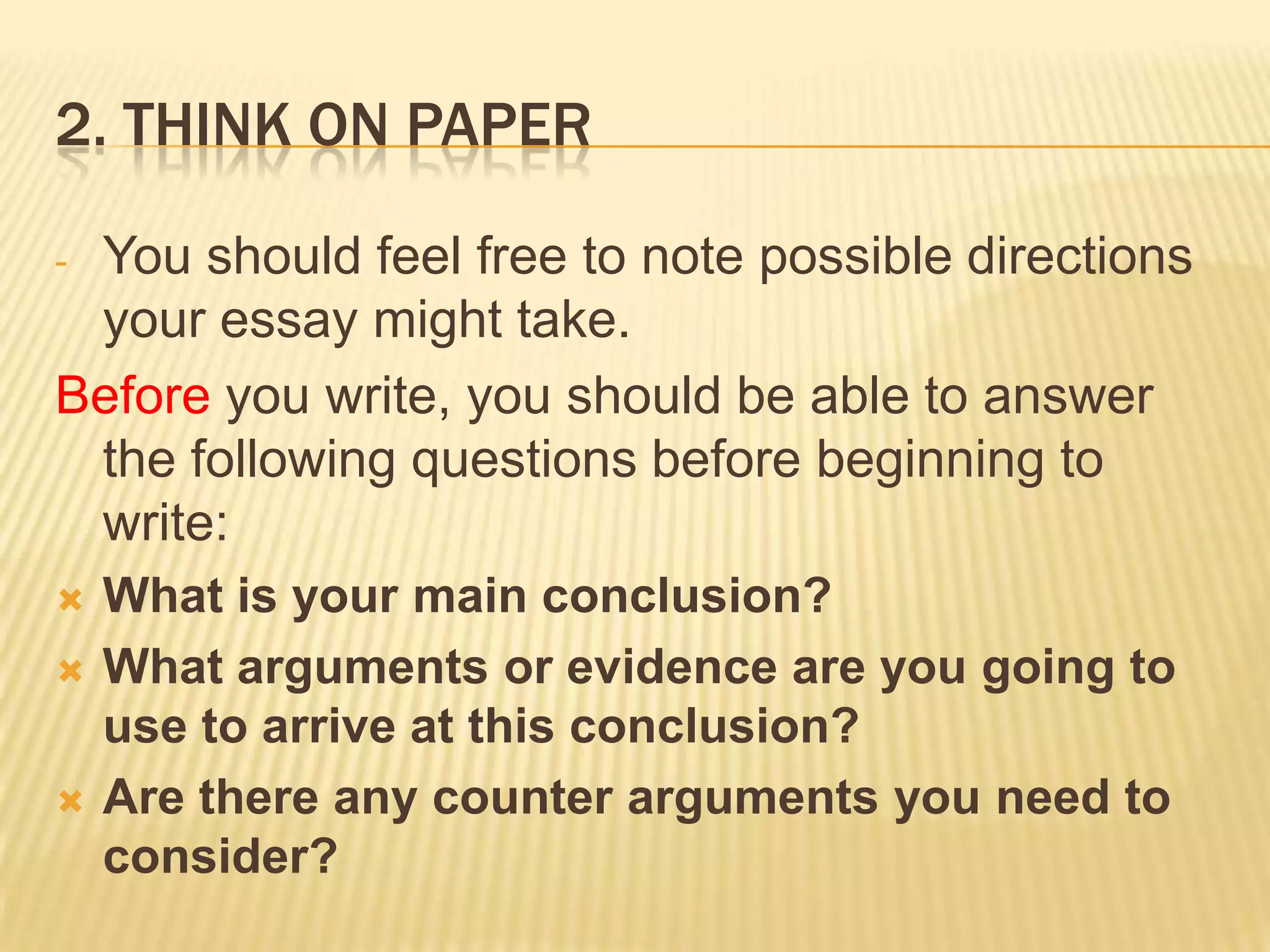
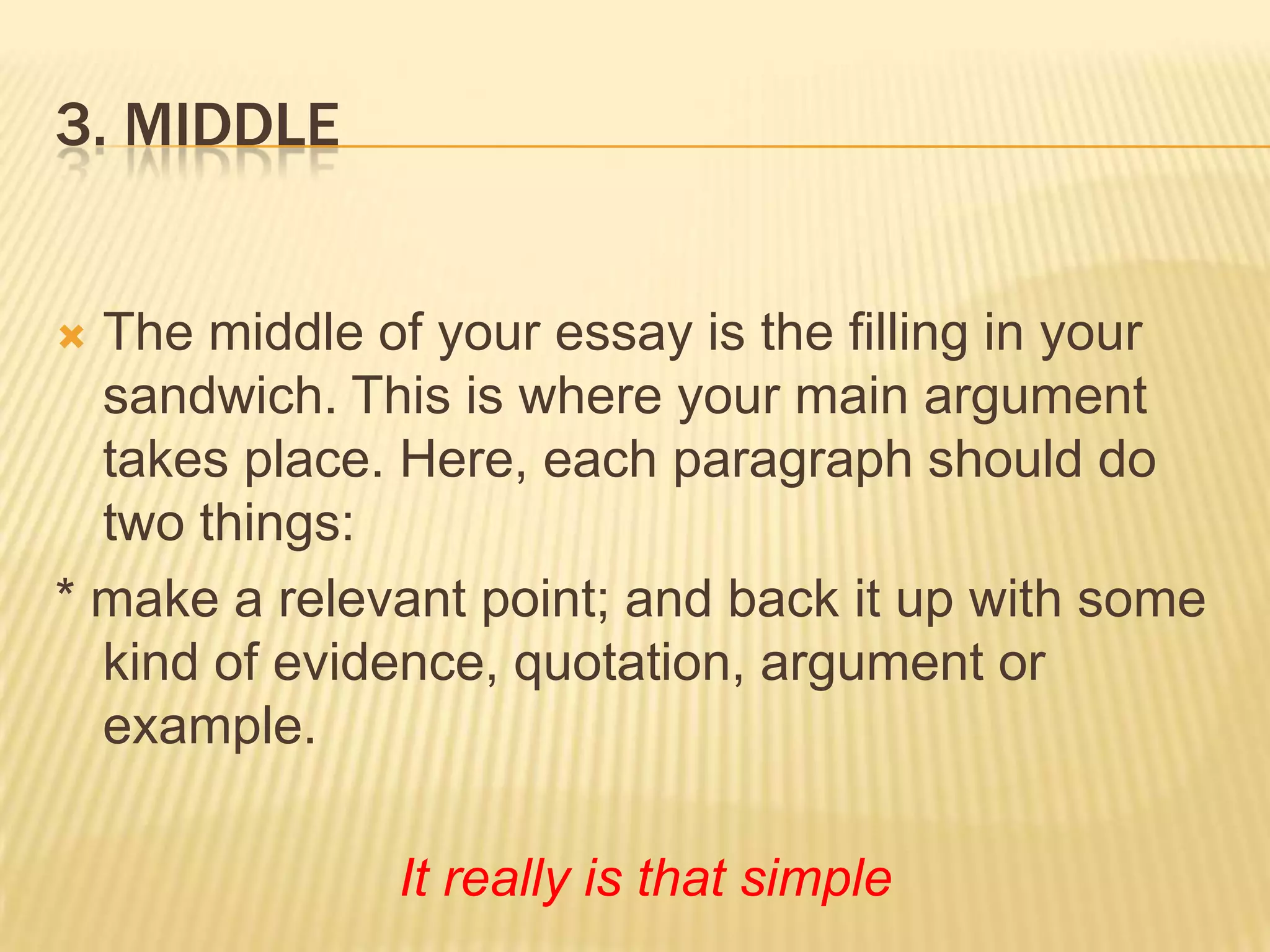
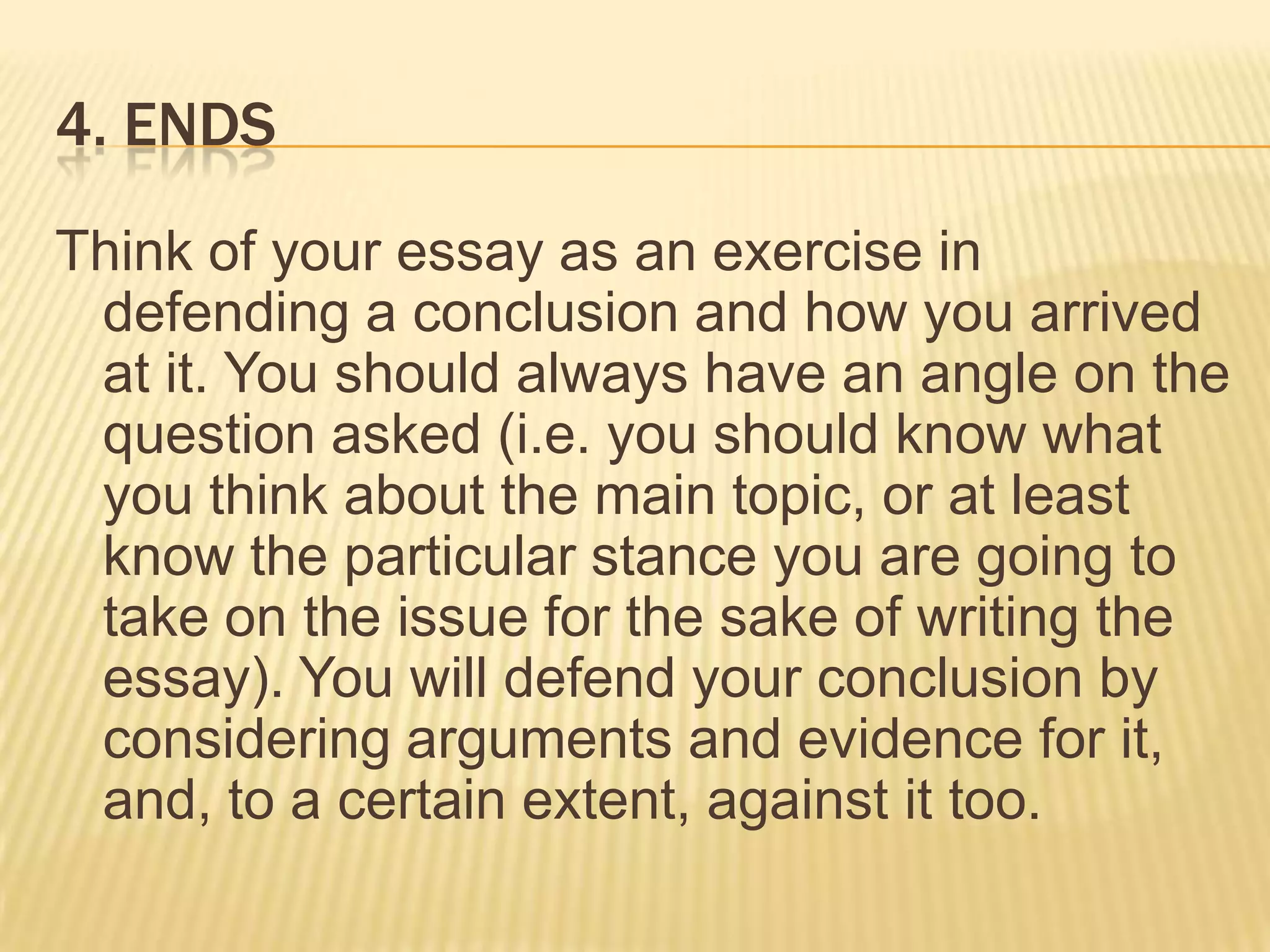
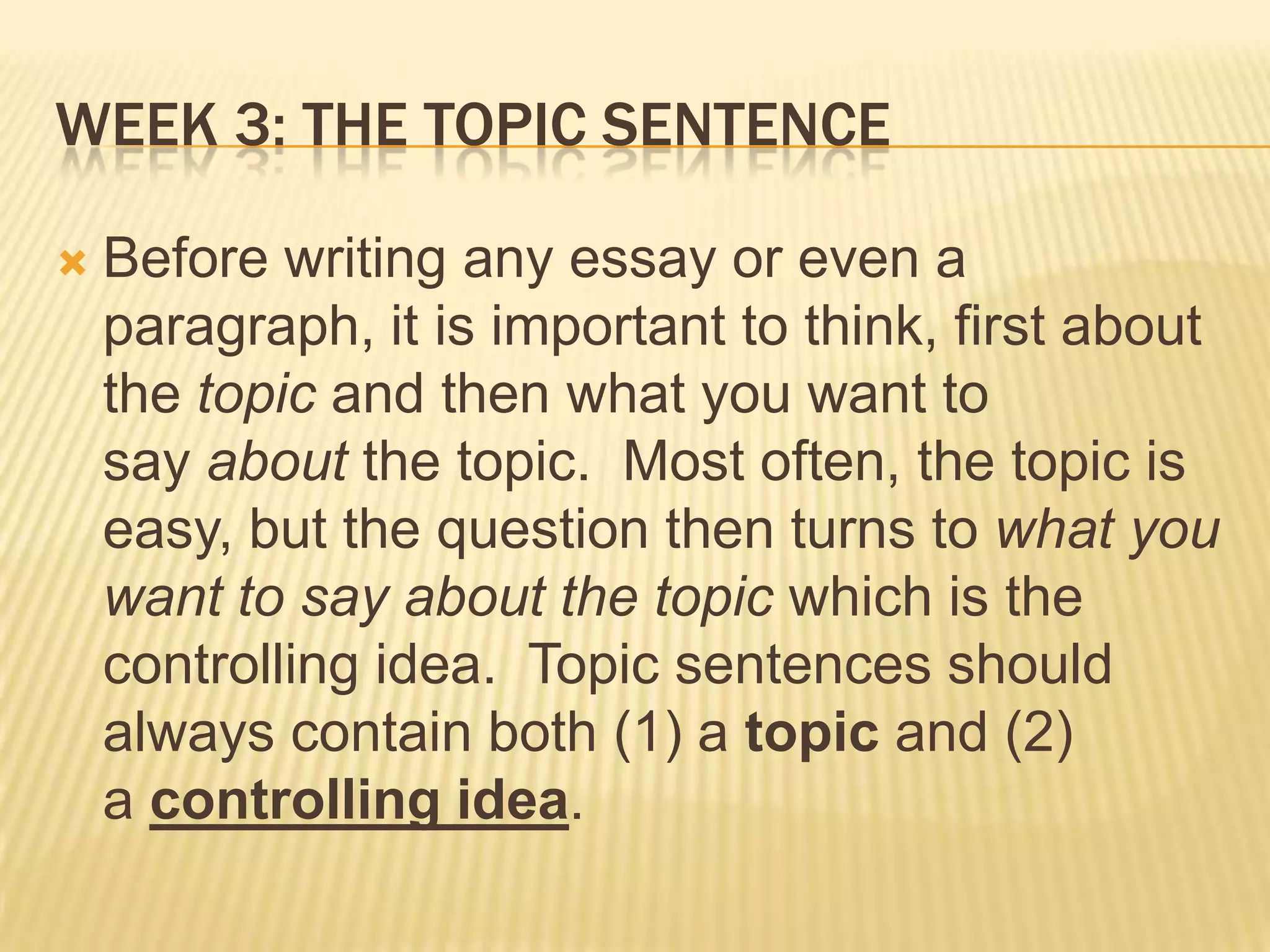
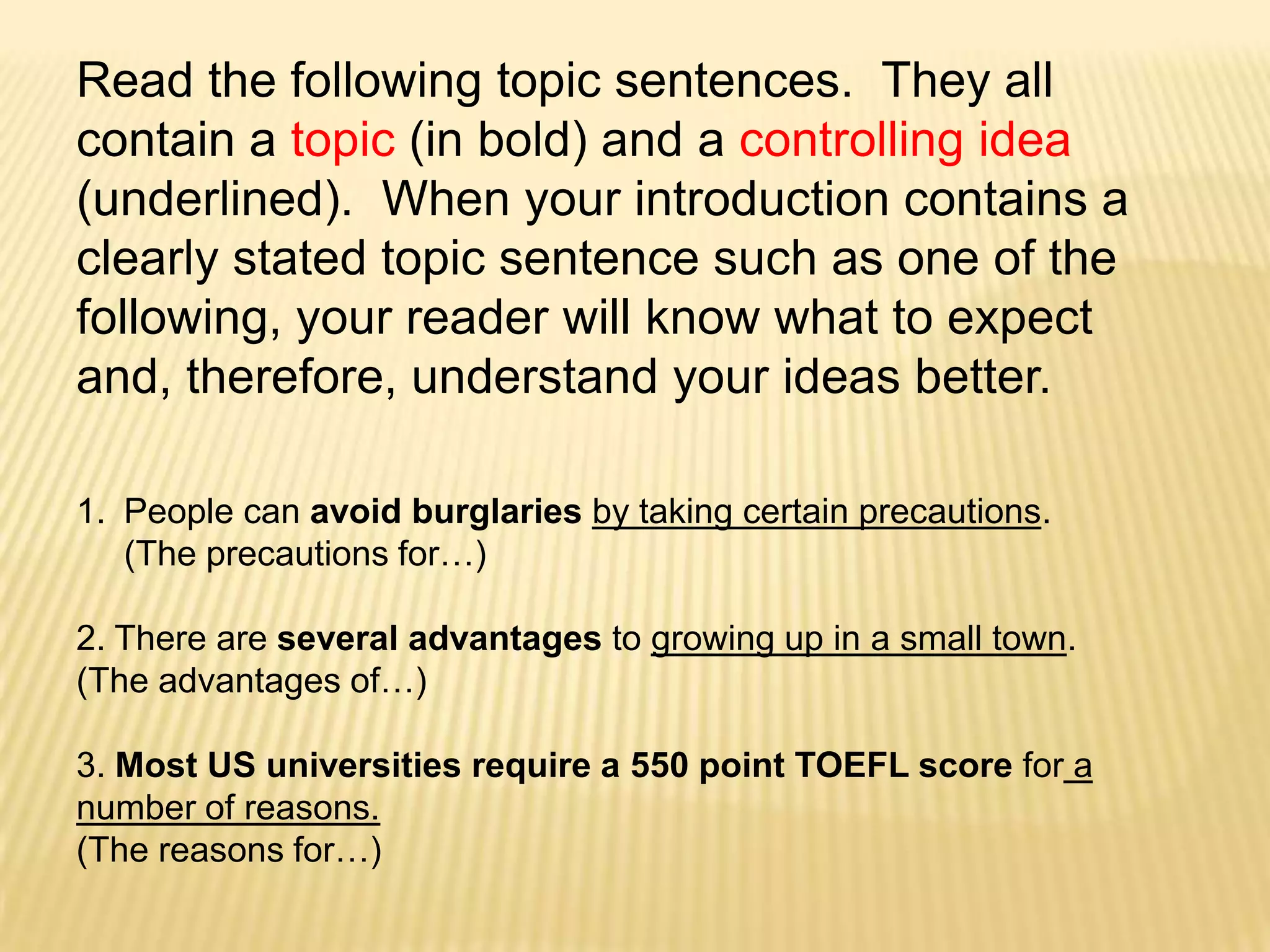
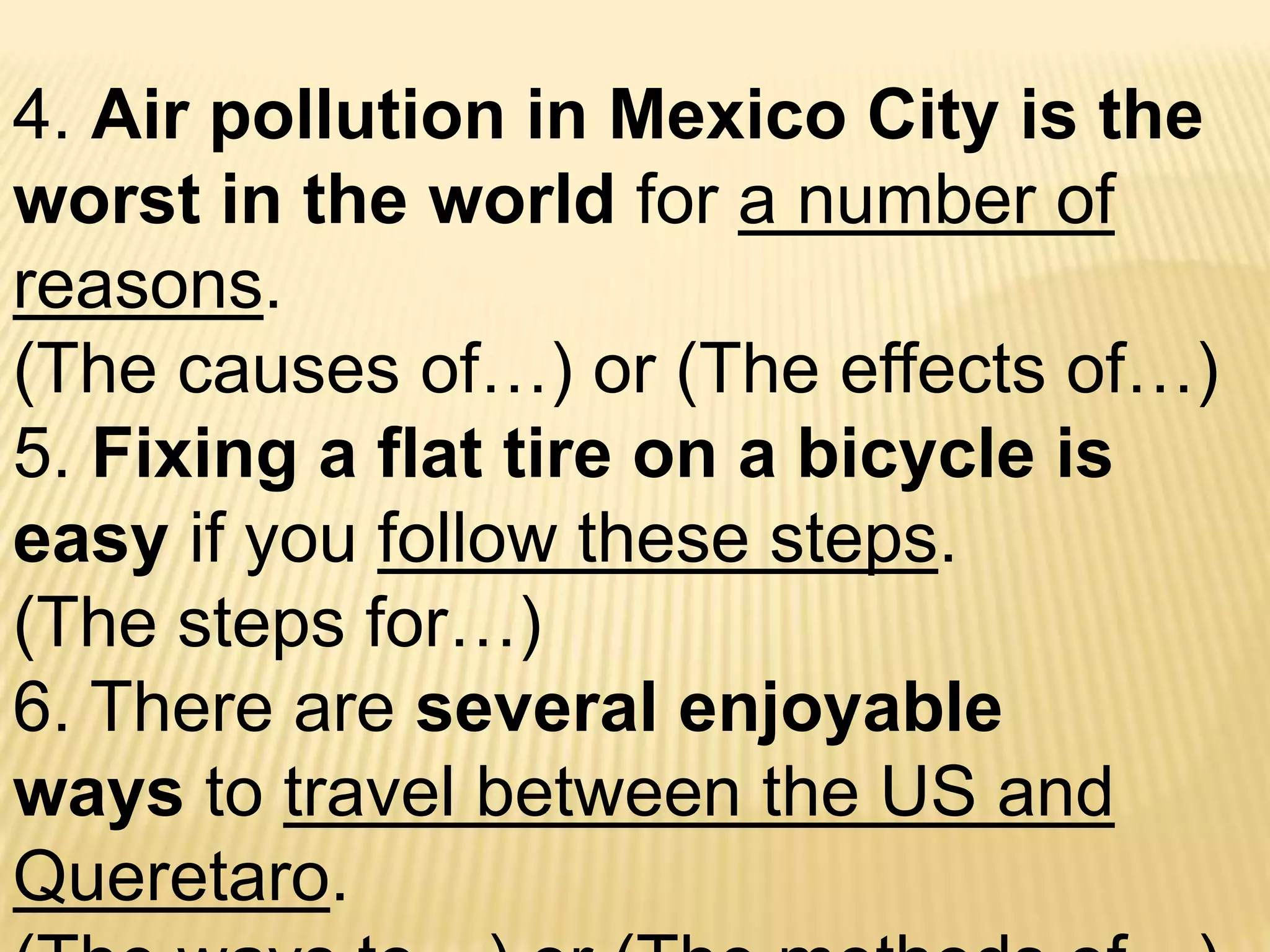
![Exercice: find the topic and the controlling idea in the following sentences.1. Animals in danger of becoming extinct come from a wide range of countries. (The different countries… [parts, kinds, types])2. Effective leadership requires specific qualities that anyone can develop. (The qualities (or characteristics or traits) of…)3. Industrial waste poured into Lake Michigan has led to dramatic changes in its ability to support marine life. (The effects of…)](https://image.slidesharecdn.com/week4-writing4-topicsentence-110318140939-phpapp02/75/Week-4-writing-4-topic-sentence-12-2048.jpg)
